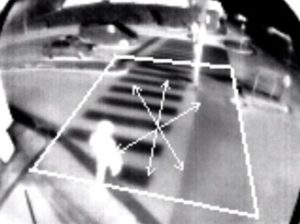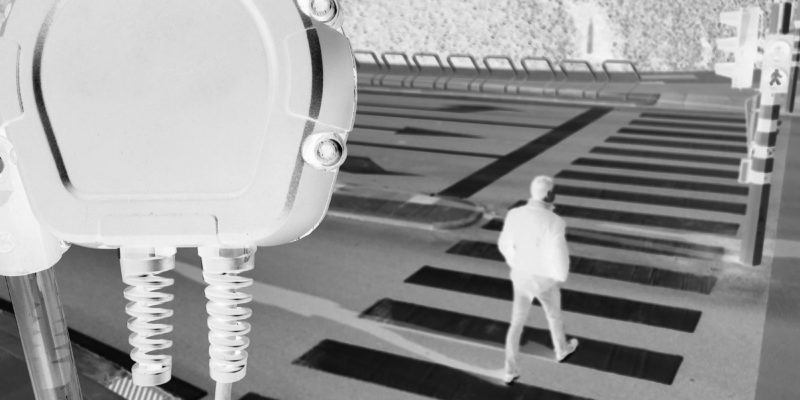The risk of community transmission of coronavirus has caused pedestrian crossing buttons to become temporarily obsolete. Thankfully, current substitution measures have included the automation of traffic lights and pedestrian crossings at pre-determined intervals as a touch-free substitution. Although this temporary fix mitigates the risk, unnecessary delays and inefficiency can occur due to traffic interruption when pedestrians are not present.
The Challenge of Touch-Free Initiation
Until now, the humble ‘crosswalk button’ has been the physical trigger for prompting traffic lights to change. Allowing crossing signs to illuminate green along with an audible indication for the visually impaired, indicating that it is safe to cross a road.

Given these points, the visual and audible signals to protect vulnerable road users must of course remain. However, preceding these is the trigger button, which poses a challenge to achieving touch free initiation of a crosswalk and consequently efficient traffic flow.
Thermal Imaging Sensors
This is where thermal imaging sensors can provide the necessary detection system and ‘trigger’ for dynamic traffic signal control, regardless of adverse weather and/or low light conditions. The FLIR TrafiOne[1]is a cost-effective detection sensor that uses thermal imaging to detect both the presence and occupancy of pedestrians at a crossing or intersection. Providing a touch-free solution that traffic engineers can use to improve traffic flow and protect vulnerable road users.

Additionally, unlike the press of a crosswalk button, the added detection data can be used with smart analytics to provide additional traffic insights and improve traffic flow. Whilst detection also allows trigger cancellation if a person moves away from the capture area.
Privacy and Data
But what about privacy? As thermal image sensors rely on body heat for detection, visual anonymity is somewhat protected. Data collection is also encrypted in a cloud platform with 2048-bit encryption, ensuring access to data restricted and protected. Of course, each cities government and urban planning needs to consider their individual policy and strategy to accommodate any new technology implementation.
Adapting to change
The current climate has disrupted many existing systems and practices in infrastructure and public safety. With the mindset of adapting to change, limitations can be overcome, and the embracement of new technology can allow a smarter, safer city to emerge.
By Garry Taylor

A FLIR Premium Partner
[1]Offered in a compact and affordable package, FLIR TrafiOne is a smart city sensor that provides a touch-free solution to crosswalks, enhancing the safety of vulnerable road users and improving traffic flow. For more information visit www.armitagegroup.com.au

